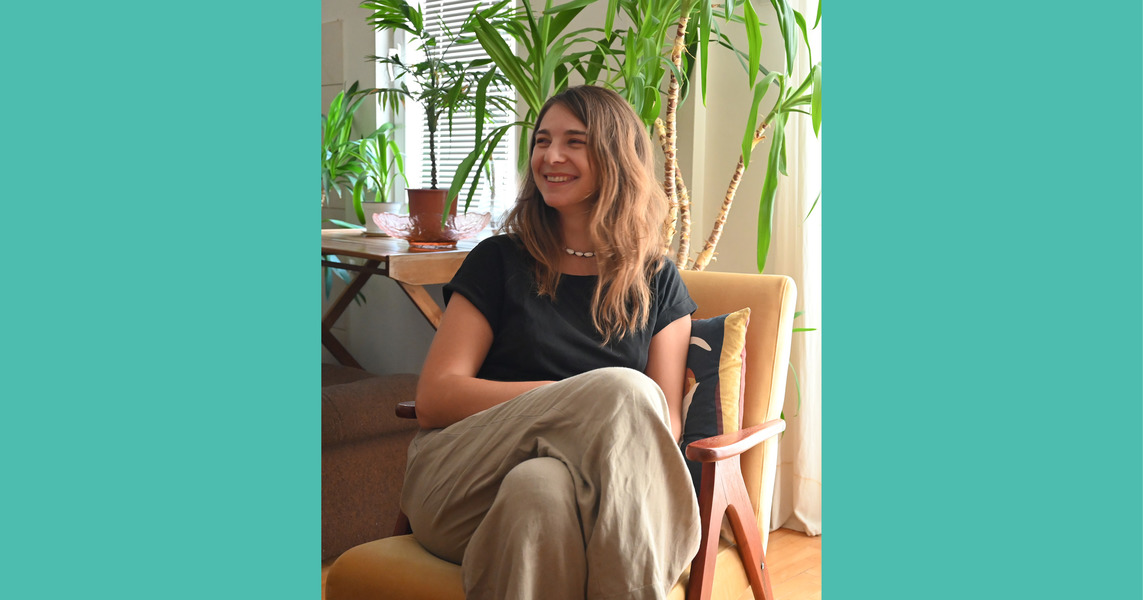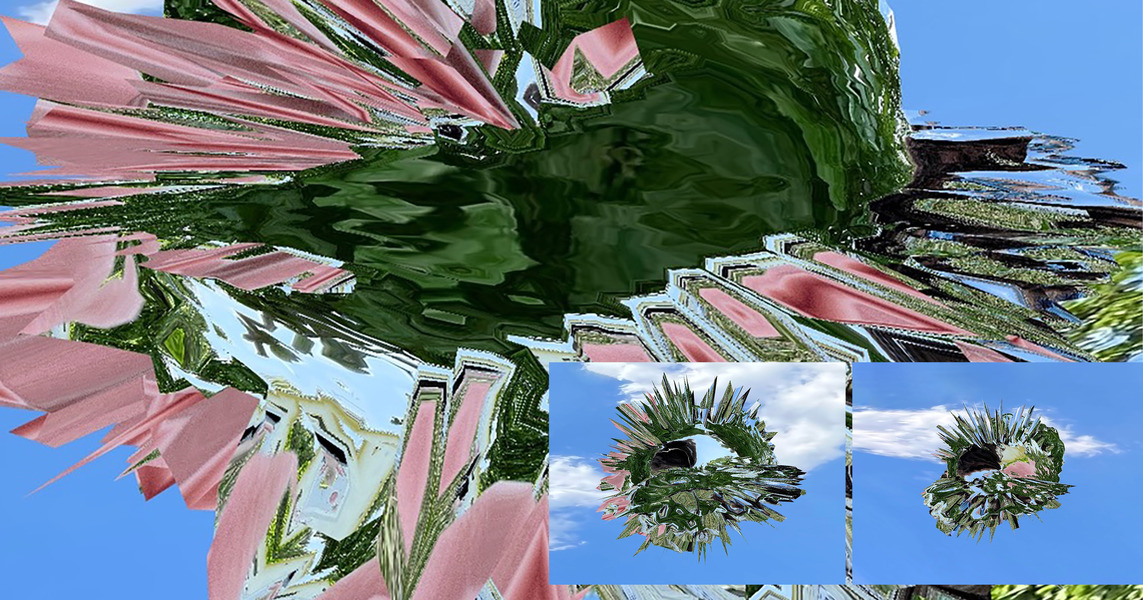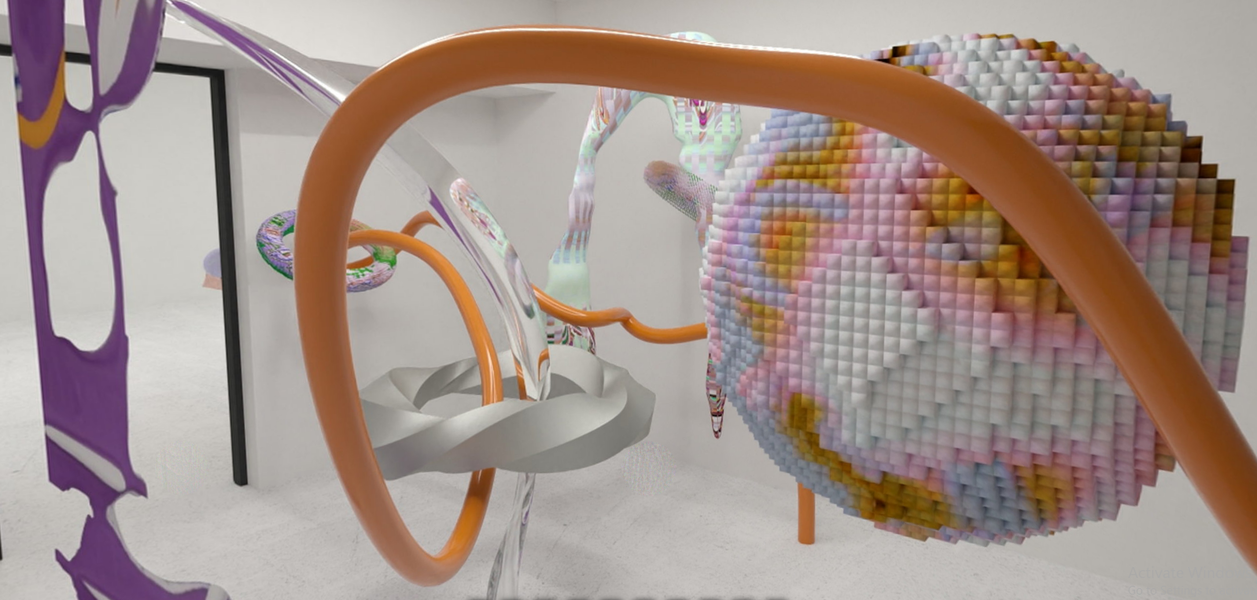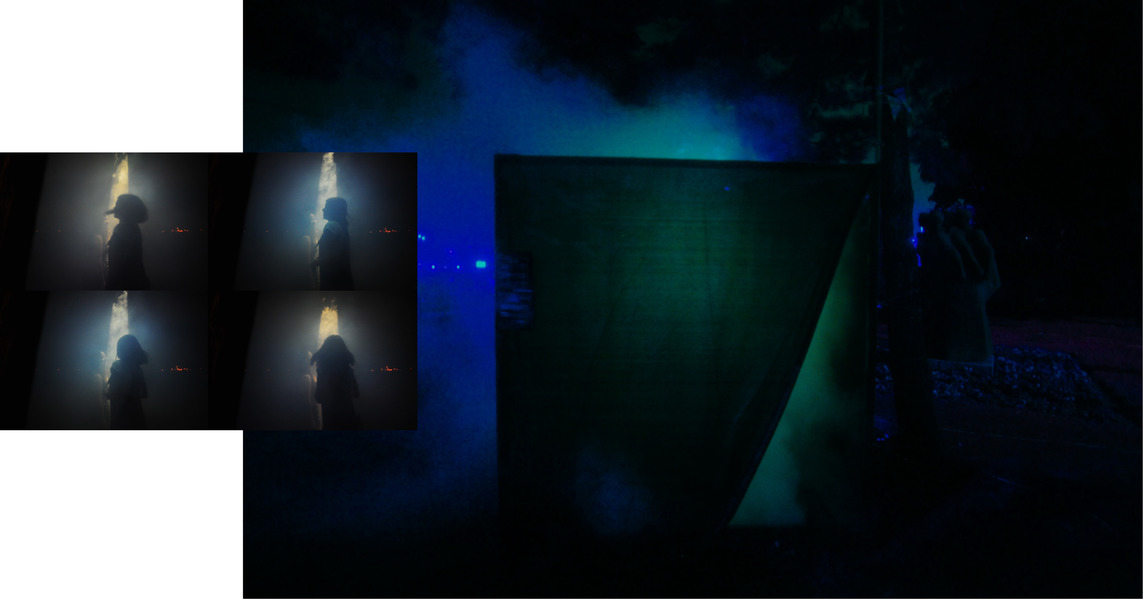Ema Velkovska talks about the designer's purpose and the importance of interaction and teamwork
Published on: 4.11.2022
The interview was conducted in August 2022 within the PrivatePrint Meets program and continued in October 2022 through electronic communication. Ema Velkovska (b. 1995 in Skopje) shares her views on the designer’s practice in general, the importance of interaction and teamwork, her graphic design and animation work, as well as the experience in creating the exhibition Eris within PrivatePrint VR Studio 2022.

Ema Velkovska
You describe yourself as a visual designer; what is your educational background?
I studied industrial design at the Faculty of Mechanical Engineering. When I enrolled, it seemed the most interesting to me at that time. The program had everything and anything: design, furniture design, web design, product design, car design, animation, and so on. At the end of the day, though, from all the many different things, you can find your niche and find out what you want. So, in the meantime, I informally started to educate myself in graphic design and animation. I started learning different software, to discover new things.
What is the designer's job, according to you? What is the designer's purpose?
The designer is a visionary. They can perceive the problems in society differently and present them as such. Very different from someone who is traditionally educated in a particular field. The designer, the creative, can offer a solution through an unexpected tool, thus summarizing and creatively presenting a seemingly uninteresting term or topic unclear to the public, for I say that the creatives can bring the issues to light in a different way. The task lies in the practical aspect of solving a topic. They simplify and visualize things to give the public incentive to ongoing communication or open a new one.

Ema Velkovska, “Skopje Recycling”, details of the visual identity, 2018
So, interaction is the most crucial moment for you. What is primary about design is to make contact between us and the rest of the world.
Well yes. Even if it doesn't convey a specific message, the design is there, the focus is there, and we say to ourselves: I have to see this and notice it. In such a way, the design stimulates or conceives a topic.
Interaction does not necessarily mean touch; interaction can be any challenge that will attract a person to listen or perceive something, where one will be attracted to have contact and direct all their attention to a specific work.
Is the goal only to get the designer's work noticed?
Well, the goal is for the viewer to notice it and wonder... At least for the designer to give an incentive or point out something. I think it is a way to draw attention to something. That should be the design's purpose. It should move around people's attention.
But only for some purposes; it only sometimes works like that. Sometimes the design serves to make you comfortable and pleasant and to be subtle. But if it has a goal, it should be influential and make some greater focus for the person.

Ema Velkovska, “Reassemble”, digital manipulation, 2022
In this regard, tell us more about your design work outside the marketing agency work. You work with video, installation, and other media.
I am not used to saying: this will now be my work. Everything I've done was for a purpose. It was on a particular topic for a project, a campaign for something, and so on. And in the works in which I experiment, with music or otherwise, they do not aim to convey a pure message because there is no pure message, but they represent a sensibility. There is no clear conclusion. No, I want to open up a conversation or at least something to dissect further. To present some sensibility to open up a topic. I don't want to give concise messages because I don't have them. I don't think they even exist. Only questions to be asked and topics to be opened. To interact closely with people and be able to strike a feeling.
How important is technology to design? And can it be said that design is inseparable from technology?
Yes, in this day and age, design is inseparable from technology. Especially since we live in a time when digital technologies reflect too much on our habits, perceptions, and thoughts, even our problem-solving relies somehow on the digital.
I am fascinated by the digital world; I like to use digital tools because they reflect our present day, habits, and everyday life, literally all the current communication.

Ema Velkovska, “Eris”, virtual exhibition, PrivatePrint VR Studio 2022
You worked with us as part of our virtual exhibition program, VR Studio 2022. In this context, how does your previous work connect with working in our virtual space and the Eris exhibition?
Totally. It was like: hey, I want to make an installation, which is digital but also tangible, but I don't know how to perform it. Here virtual reality does its job. The theme of Eris is entirely digital and speaks mainly to the digital world's chaos, making the VR studio the right place to realize this exhibition.
In my so-called experiments so far, I always use digital tools. Mainly, the effects arise and are inspired by the computer and the digital, generally speaking, or by objects, movements, and music that come as a consequence of interaction with the digital. Now we are more present in the online world, as I said, so I would say that these communication tools are pretty accessible and relevant. Here we can turn something uninteresting into fun and attractive.
The idea of VR Studio is to be a collaborative project. The exhibition is created between the artist, the designer, and the curator, and the works do not exist outside the virtual space. How do you see these possibilities of extraordinary cooperation?
Virtual reality can become a practical tool that shows us something more and makes us aware of our presence and understanding of the surrounding environment. Designers mainly use virtual reality for experiments, some jagged details, or amusement. However, there is a lot to explore more deeply, especially in the field of education, journalism, and other stories.
Therefore, virtual reality can improve the current environment or situation by enriching the perception through a digital stimulus. After all, with virtual exhibitions, the artist can give a new side to the world and play with sensory information in collaboration with the team. What's particularly interesting is that we can play with additional auditory layers that change the viewer's perception.
As a visual designer, I appreciate the opportunity to use this endlessly expressive tool, which leaves behind something of narrative value. And the exhibition itself is timeless; that is, the experience is not one-time and temporary as it is in the physical space; the work is not tied to a location and exists in all cities and all places at every moment. It is more of a personal experience of a story.

Angela Stefanovska & Ema Velkovska, “Superstudio”, audio-visual installation, Paratissima, Skopje, 2017
Can you share a project you have yet to realize so far?
In general, I like to cooperate; it brings me exceptional happiness. I am completely captivated by that communication, reciprocity, and what we can do together. With a team of designers, musicians, writers... I think that symbiosis satisfies me the most.
I can't say that design is the most powerful tool of all those tools, but it is a tool that I use to show a more clear message with all other tools together. To bring them together and communicate with them. To organize them and to create the team, musician, and writer, to combine all those most wonderful people in one place in one super powerful project. That's how my brain works when it comes to a new project.
The photographs of the works are courtesy of the artist.
--
PrivatePrintMeets is a series of meetings with emerging artists from N. Macedonia and is part of PrivatePrint's project activities funded by the Prince Claus Network Partnership programme.
VR Studio 2022 is co-financed by the Ministry of Culture of the Republic of North Macedonia and made possible through our activities in the PrivatePrint Meets series funded by the Prince Claus Network Partnership Programme.